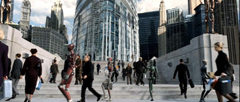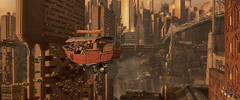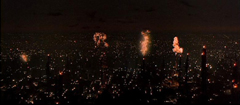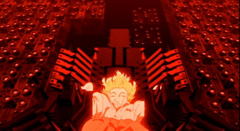 |
All
the films analyzed speculate an urban future along the same line. The movies
portray a different point in the urbanization of the planet. I-Robot
portrays a Chicago of the near future which is similar to the city that
currently exists. This is the most utopic vision of the future, affording
a luxury that is still possible in contemporary society. In Renaissance
2054, the marks of densification are present. A struggle is exists
between the necessity to provide shelter and efficient transportation lines
and an ambition to maintain urban artifacts. The same is true of the New
York shown in The Fifth Element, it’s an urban form that
literally builds on its past. This strategy is stated to be a lost cause
in the film as the oldest artifacts at the bottom of the hierarchy are uninhabitable
spaces consumed by the cities rubbish. Both versions of Metropolis
show that new strategies of city planning and conceptions of urban space
will have to be adopted. Space will be to valuable not to build below the
ground. Massive areas will have to be dedicated to the provision of the
urban necessities of shelter, energy supply and waste management. Blade
Runner and Metropolis (2001) represent the most distant urban
future. Both films present realms of existence that are constructed entirely
from industrial fabricated materials. It is these speculations that are
the most uncanny because they are so different from the organic world that
is known yet they seem to be the destined outcome of the singular path of
development presented. |

(I-Robot/2004)

(Renaissance 2054/2006)

(The Fifth Element/1997)

(Blade Runner/1982)

(Metropolis/2001)

|
|







